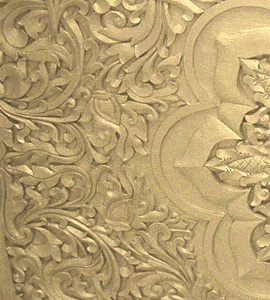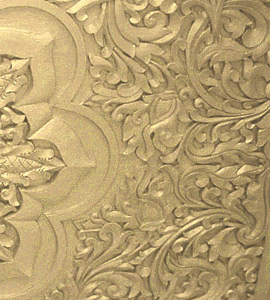


Children's and Teenager's Courses
Vipassana & Education - Children’s courses
In a time of worldwide social transition and upheaval, more and more people throughout the world are seeking concentration, purification and peace of mind by practicing Vipassana meditation. Experiencing these benefits, many wish that they had found this technique earlier in their lives. The ideal time to begin in fact is in childhood.
Anapana meditation as taught by Gautama the Buddha is the first preparatory step for learning Vipassana. It is a technique whereby one observes the natural, normal breath—as it is.
Breath is an ideal object for meditation because it is always available and is completely nonsectarian. In the Pali language, ana means breathing in, apana means breathing out. By developing the awareness of the natural breath and learning to observe it, children increase their ability to concentrate. Commonly seen results are a sharper memory, a reduction in negative behaviours and the development of a more balanced personality. Anapana provides children with an effective tool to deal with the fears, anxieties and pressures of childhood and adolescence.
Due to its simplicity, children find the technique easy to understand and practice.
The spread of children’s courses around the world: The first children’s course was conducted by Goenkaji in Mumbai in April 1986. By 1994 more than 100 courses were being held every year for over 11,000 children in India. Now the total has risen to 25,000 per year.
In 2007, at the request of the Municipal Corporation of Mumbai, 120 courses were conducted over a period of 6 months, covering 9000 children from 48 Municipal schools in Mumbai. Among these were children appearing for the School Leaving Board Exam in April 2008. That year saw among the highest success ratios for students from Municipal Schools in this Exam.
Courses in India have been held for special groups such as street children, orphans, hearing and speech impaired, and physically and mentally challenged children. In Pune, for example, a home for destitute children has offered Anapana courses for the last 10 years and the local Vipassana centre holds regular courses for children with hearing impairments. In Myanmar, there have been courses for children with visual or hearing impairments, children affected by leprosy, trauma victims and juvenile offenders in various institutions.
Courses are now held across the world. In North America there are 30 children’s or teens’ courses held each year. There are also frequent courses in Europe, Australia, Africa and Southeast Asia. In Myanmar alone, over 16,000 children attend courses each year.
Vipassana Meditation and its relevance to the World: “We give the seed of pure Dhamma to these boys and girls and after 15 or 20 years the new generation that comes up will have responsibility towards their family, towards society, the country, the world, towards humanity. They should grow up to be ideal human beings. This is our only aim.” - S.N. Goenka
Since 2005, a 7-day course for older teenagers has been introduced at Vipassana centres in India but so far it is available only in Hindi.
The Children’s Course Format: Separate courses are held for children aged 8 to 12 and for teens aged 13 to 18. Often the program starts in the morning and ends in the evening, but there are also two and three-day courses held at Vipassana centres.
A trained children’s course teacher conducts the course. Assisting the teacher are helpers who each work closely with a small group of children.
During the course, short meditation periods are interspersed with supervised play and activities such as drawing and discussion. The objective is for the participants to have an enjoyable experience and introduce them to the basics of Anapana.
Anapana meditation in schools: One or two day non-residential Anapana courses (spanning six hours) can be conducted during school hours for children aged eight to eighteen. School teachers may also participate in the course. In residential schools, 3-day residential courses have been held.
Regular daily practice of Anapana is the key to long-term benefits for the children. Studies of the participants in school courses found significant increase in self-discipline, honesty, cooperation, attentiveness, cleanliness and concentration; while at the same time there was a decrease in irritability, quarrelling, abusive language and feelings of inferiority.
Educational institutions can adopt Anapana for their students as part of a holistic approach that fills a vital gap in modern education. These Anapana programs assist the children to train their minds, leading to more balanced, peaceful and purposeful living. Such an initiative makes a crucial contribution towards the development of wholesome individuals and a harmonious society.
Now over 60,000 children from around the world attend children’s courses every year and 1000 Vipassana students have been appointed as Children’s Course Teachers.
For more information about children’s courses around the world, see the website: www.children.dhamma.org
Courses for Teenagers - 7-day Residential Courses
The course is designed for young people aged 15-19 years in South Asia. At present these are only available in India and Myanmar in Hindi and Myanmar languages, not in English or other languages. There are separate courses for young men and young women. The technique is the same as on the 10-day courses for adults, but with evening talks that are more suited to teenagers in the region.
All participants must read the Code of discipline and fill the Application form for Teenagers' courses, giving full details and get their parents' approval on it. They will be personally interviewed by an Assistant Teacher, who must ensure before recommending them that they understand the serious nature of the course and will observe the course discipline.
For more information about courses for teenagers, www.children.dhamma.org/en/teens/courses.shtml

